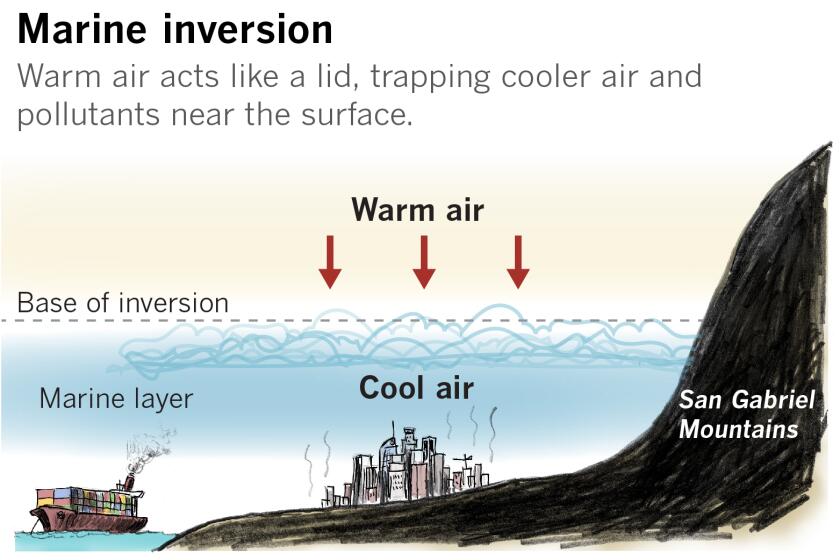World leaders reach agreement during climate summit

- Share via
WASHINGTON — Global leaders can point to signs of real progress in the climate agreement reached Saturday. But the Earth is still headed for a dangerous level of warming.
The point of these talks was for countries to announce ambitious carbon-cutting pledges that would prevent the world from warming more than 1.5 degrees Celsius (2.7 degrees Fahrenheit) above preindustrial levels.
That did not happen. Despite some new promises, and old promises repackaged as new ones, an analysis by the independent group Climate Action Tracker found that with all the short-term pledges added together, the world is likely to heat up by 2.4 degrees Celsius (4.3 degrees Fahrenheit) this century.
That’s better than the path the world was on before the Paris agreement six years ago, when scientists predicted nearly 4 degrees Celsius (7.2 degrees Fahrenheit) of warming. But the consequences would still be catastrophic, resulting in deadlier wildfires and floods, famine and the extinction of more species.
Here’s a look at what the negotiators accomplished — and what remains unresolved.
Side deals were the main event this time
This year’s summit was unusual. Typically, the main event is the final agreement, painfully hammered out over two weeks of daily negotiations between representatives from nearly 200 countries. This time, most of the action happened on the sidelines:
- Nearly 100 countries joined a global pledge to limit emissions of methane, a planet-warming gas more potent as a polluter than carbon dioxide. Still more signed a pact to prevent further deforestation by 2030.
- A coalition of countries, cities and automakers, including Ford, General Motors, Volvo and Mercedes-Benz, committed to phase out sales of new fossil-fuel vehicles by 2040 and by 2035 in “leading markets.”
- More than 40 countries pledged to phase out coal by 2030 and stop building coal-fired power plants, helping eliminate the largest source of planet-warming gases globally.
- In a test of whether industrialized nations are capable of helping developing countries shift to cleaner sources of energy, South Africa reached a deal with the U.S., Britain, France, Germany and the European Union under which it would receive $8.5 billion over the next five years to transition away from coal.
- The U.S., Denmark and other countries agreed to work toward zeroing out emissions from the shipping industry by 2050 and creating at least six zero-emission shipping routes. If these changes are enacted, governments could require, for example, that only emission-free ships travel from Shanghai to Los Angeles.
The agreement reflects a growing recognition that the shipping industry isn’t doing enough to curb emissions on its own.
There are reasons to be skeptical of many of these agreements, environmental advocates said. Brazil and Indonesia, countries that are destroying their forests, joined the deforestation pledge. And some of the world’s largest coal-burning countries, including China, Australia and India, didn’t sign the pledge to phase out the fossil fuel.
But the level of deal-making at the summit is an “enormous sign of success,” said Sarah Ladislaw, a managing director at the Rocky Mountain Institute, an independent clean energy research organization based in Colorado. More than ever before, she said, countries, industry, investors and philanthropists are working together to reach side deals that could have a huge effect, adding that the conference should not be judged solely on whether “something very big and new” came out of the official negotiating process.
What happens next?
The summit inspired a flurry of new climate pledges from governments and industry. But in the weeks and months ahead, government officials and researchers will be watching closely to see whether they lead to concrete action.
Biden’s spending bill faces an uncertain future. A new Supreme Court case brought by West Virginia and other coal states could block the Environmental Protection Agency from regulating carbon pollution from power plants. And if Democrats lose their majorities in Congress in the midterm election, Biden would probably find his path to future emissions reductions blocked by Republicans.
The report by Climate Action Tracker found that of all the pledges countries have made to get to zero emissions, only four governments — Britain, Costa Rica, Chile and the EU — have detailed plans to achieve that.
What’s more, many of the major challenges that presented themselves at the beginning of the summit remain unresolved, including whether wealthy countries will come up with the $100 billion a year they previously promised to developing nations by 2020 to help them transition to cleaner sources of energy.
Negotiations will probably continue at the upcoming World Economic Forum in Davos, Switzerland, in January, as well as at the next meeting of energy ministers from around the world in Pittsburgh in late 2022.
“We’ve got all these promises. We’ve got all these pledges,” Ladislaw said. “But now we will see what countries are prepared to do.”
Beyond swagger, what went down between the U.S. and China?
Doubts that the U.S. and China, the top emitting countries in the world, were willing to work together on climate hung over the summit from the beginning. Chinese President Xi Jinping’s absence led President Biden to publicly criticize him for skipping the summit — a scolding that prompted the Chinese Foreign Ministry spokesman to accuse the U.S. of offering only “empty words” instead of concrete climate policies.
Despite the rhetoric, American and Chinese officials had been working together for months. The countries unveiled a statement Wednesday in which they pledged to put aside their differences and “raise ambition in the 2020s” to address climate change.
The deal itself mostly restated previous pledges, but the fact that the envoys of the two countries that together produce about 40% of global emissions could agree to even a vague goal was “confidence building,” said Kelly Sims Gallagher, professor of energy and environmental policy at the Fletcher School at Tufts University.
“We’re all in this really hyper-politicized environment, and the fact that this came together shows that they’re trying to inject some momentum into the negotiations,” Gallagher said.
What the U.S. left on the table
“America showed up,” Biden said at the summit, where he touted U.S. participation in the talks and apologized for former President Trump’s exit from the Paris agreement, which the country has since rejoined. He called on other nations to increase their climate goals, saying that “we only have a brief window before us to raise our ambitions.”
But at a couple of key moments, the United States was noticeably absent.
A shallow inversion last week was likely the culprit causing poor air quality, meteorologists say.
The White House did not join the pledge to phase out coal in the coming decades, even though coal’s decline as a source of power in America has accelerated significantly. Nor did the U.S. sign the agreement to phase out gas- and diesel-powered cars, joining China and Japan in withholding support from a deal that could have a greater influence if all three — some of the largest car markets in the world — had backed it.
Experts said the decision to abstain from these pledges spoke volumes about America’s domestic politics and the influence of the coal, oil and gas industries. The American negotiators may also have been reluctant to antagonize Sen. Joe Manchin III, a centrist Democrat from the coal state of West Virginia, whose support the president will need if his biggest climate policies are to win approval. The Democrats’ spending bill faces an uphill battle in Congress, despite its pared-down measures.
Youth climate activists made their case in the streets
Thousands of climate activists traveled to Glasgow to demand countries act faster to combat climate change. Many of them were young protesters, including Greta Thunberg of Sweden and Vanessa Nakate, an activist from Uganda, who have achieved international recognition by publicly calling out world leaders for failing to take action and ignoring the demands of developing countries.
Summit attendees said that COVID-19 protocols made it much more difficult this year for protesters to confront international leaders in person. But outside of the formal negotiations, there were side events, panels and marches, offering the activists a platform to make their displeasure known.
They may have affected the proceedings’ tone. There were boastful claims of progress, but these were often tempered by acknowledgments that the math doesn’t add up and more cuts will have to be made to keep global warming in check.
“Let me emphasize as strongly as I can: Job not done,” John F. Kerry, Biden’s climate change envoy, said at a news conference earlier this month. “But this is doable if we follow through.”
More to Read
Toward a more sustainable California
Get Boiling Point, our newsletter exploring climate change, energy and the environment, and become part of the conversation — and the solution.
You may occasionally receive promotional content from the Los Angeles Times.













